Your Pillows Are Probably Gross. Here’s How to Wash Them Without Ruining Them.
Let’s be honest for a second. You probably wash your sheets every week, right? But what about that pillow you put your face on for eight hours every single night? If you’re like most people, it’s been a while. Maybe a long while. A pillowcase is just a thin piece of cotton—it doesn’t stop all the sweat, skin oils, drool, and dust from soaking right into the pillow itself.
In this article
Cleaning your pillows isn’t just about getting rid of the ick-factor. It’s about getting better sleep and making your expensive pillows last longer. The wrong move can leave you with a lumpy, useless mess. Too much heat can literally melt certain fills, while the wrong motion can tear foam apart. But the number one mistake I see? Improper drying. That leads to mold and mildew, which is a one-way ticket to the trash can (and way worse for your health).
This is the no-nonsense guide to getting it right. No fluff, just what actually works.
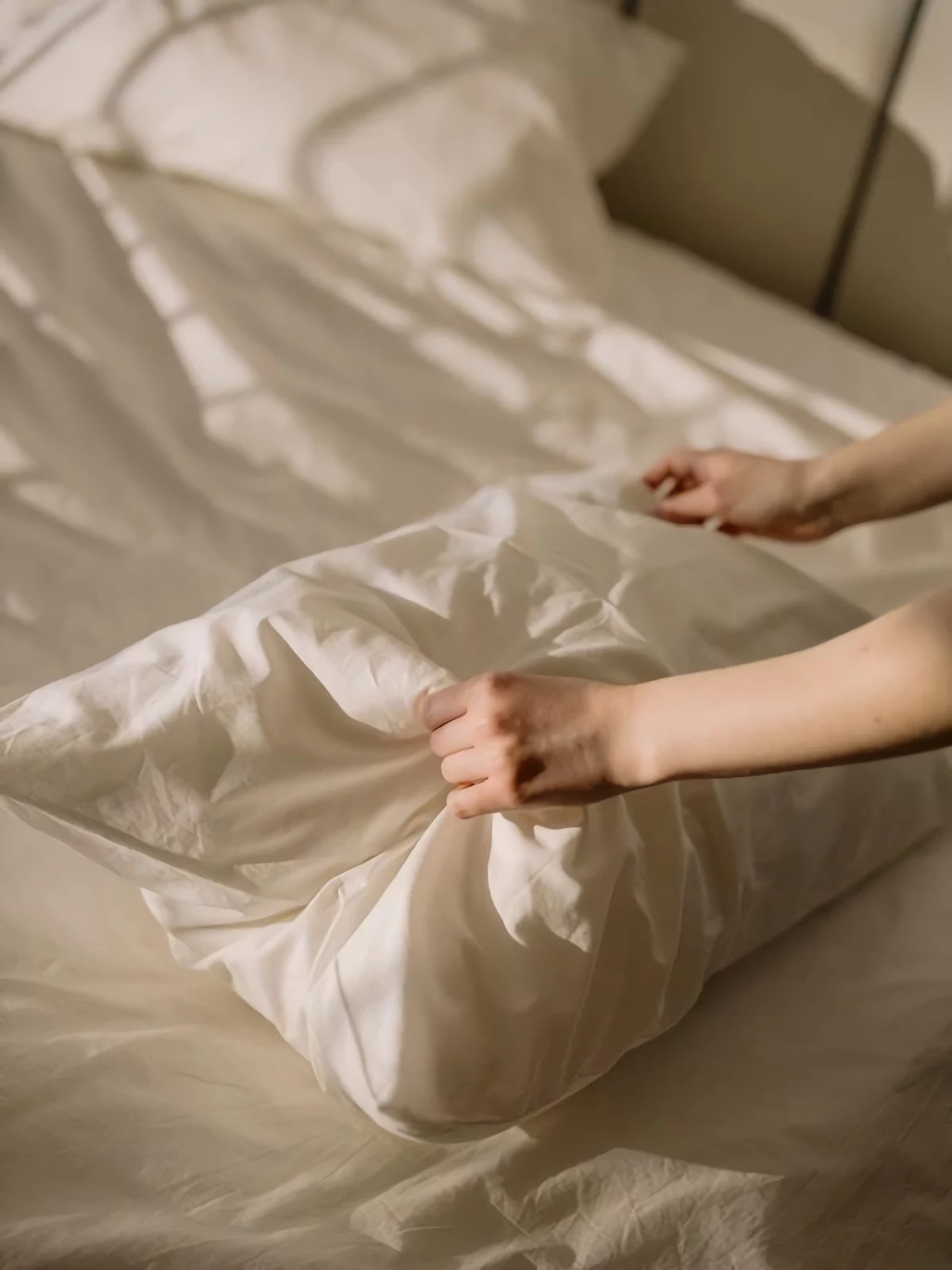
First, Let’s Prep: Don’t Skip This Part!
Before a single drop of water gets involved, you need to do a little recon. This is where people mess up, and it’s what separates a clean, fluffy pillow from a trip to Target to buy a new one.
1. Actually Read the Care Label
I know, I know, but this is your pillow’s instruction manual. If it’s still attached, it’ll tell you exactly what the manufacturer recommends. Look for the little symbols: a tub of water means it’s machine-washable, a triangle is for bleach, and a square with a circle is for the dryer. An ‘X’ through any of them means DON’T DO IT. If the tag is long gone, no worries. Just play it safe and always use the gentlest method: cold water, a delicate cycle, and low (or no) heat.
2. The All-Important Fold Test
Washing a pillow that’s already dead inside is a complete waste of your time. This quick test tells you if it’s even worth saving.
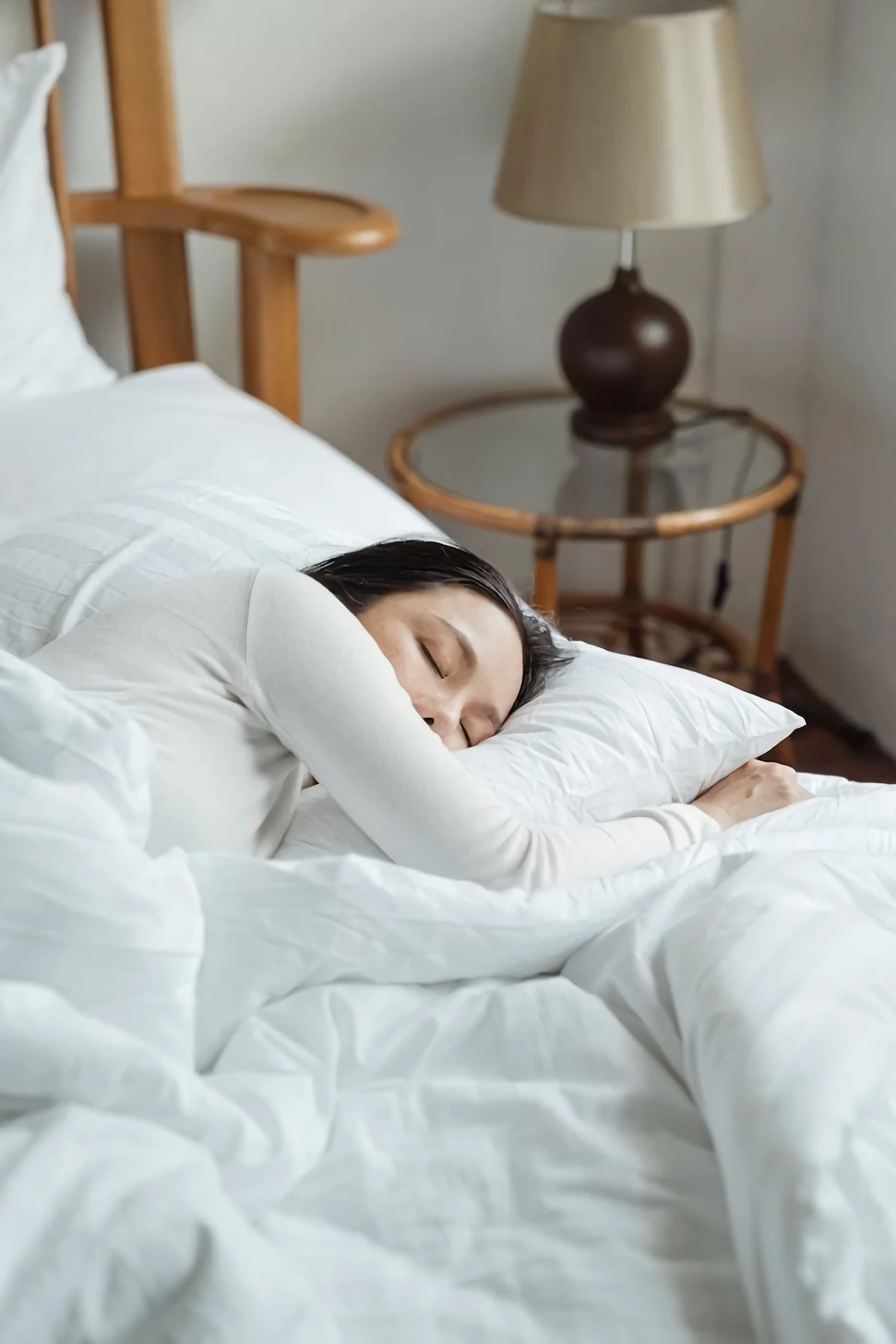
For squishy pillows (like down, feather, or synthetic): Lay it on a flat surface and fold it in half, squeezing the air out. Now let go. A good, healthy pillow will spring right back to its original shape. If it just sits there, folded and sad, its internal structure is shot. Time for a new one.
For memory foam or latex pillows: Press your hand firmly into the middle of the pillow and hold for about 30 seconds. A quality foam pillow will slowly regain its shape. If it stays indented or bounces back instantly like a cheap kitchen sponge, it’s lost its magic. Time to replace it.
3. Spot-Treat Those Stains
Attacking stains before the main wash makes a world of difference. For those lovely yellowed spots from sweat and oils, an enzymatic stain remover is your best friend. These products are designed to break down proteins. You can find them at most grocery stores or online; look for brands like Puracy or OxiClean. Just dab a little on, gently rub the fabric, and let it sit for about 15 minutes before you wash.
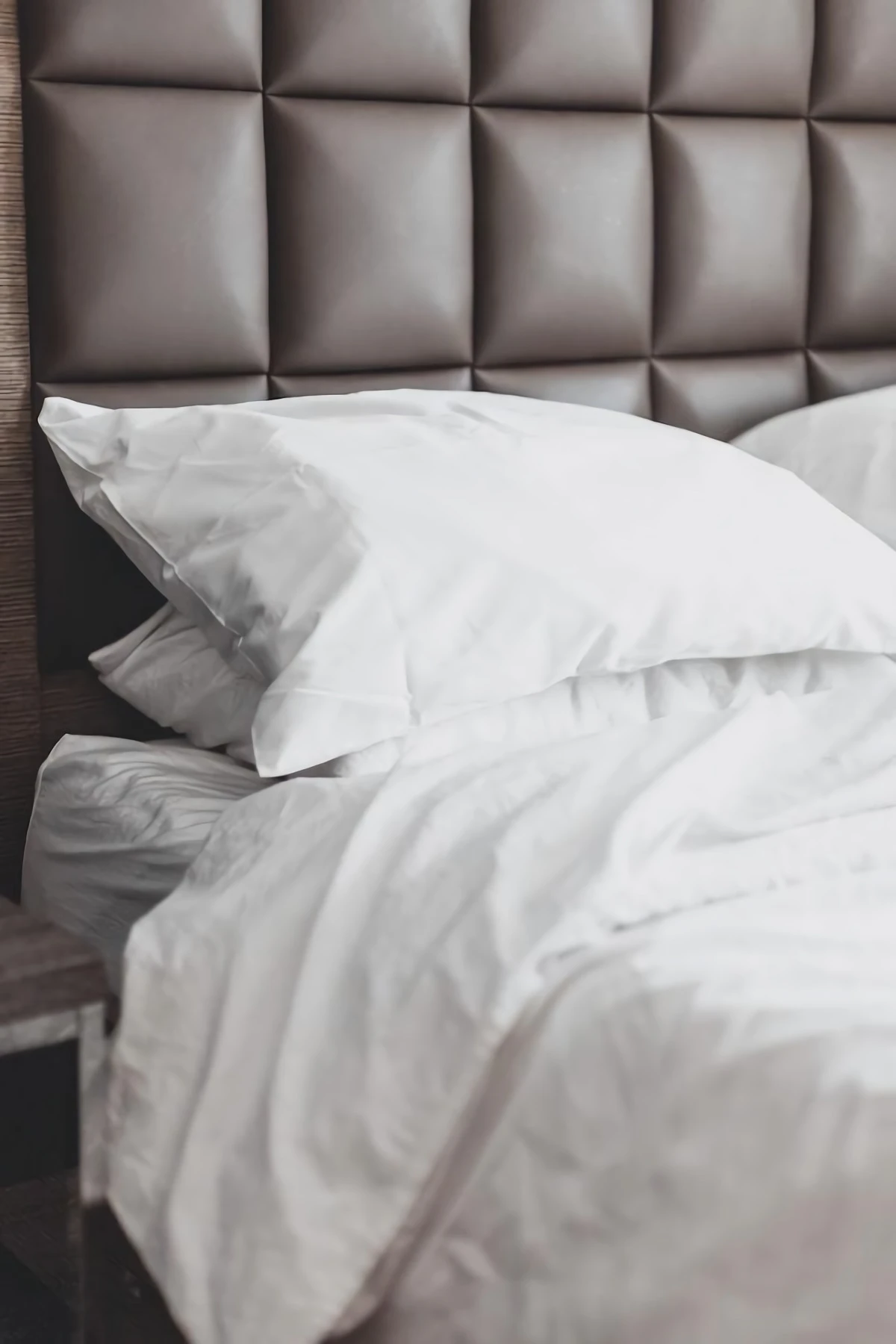
For makeup or greasy stains, a tiny drop of blue Dawn dish soap often does the trick. Just be careful not to use too much, or you’ll be rinsing suds for an eternity. And a word of warning: always test your spot cleaner on a small, hidden corner first. I once saw someone try to clean a fancy pillow and the harsh chemical just bleached a giant white spot onto the fabric. Ouch.
How to Wash Every Kind of Pillow (The Right Way)
The stuff inside your pillow is what really matters. You can’t wash a down pillow the same way you wash a memory foam one. Here’s what you need to know.
By the way, before you start, it’s a good idea to have these things ready:
- A gentle, low-sudsing liquid detergent (like Woolite or a ‘free & clear’ type)
- Wool dryer balls or a couple of clean tennis balls in white socks
- Your spot cleaner of choice

Down & Feather Pillows
These feel super luxurious, but they’re tougher than you think. The key is to wash them without stripping the natural oils from the feathers, which is what keeps them fluffy.
- Can you machine wash? Yes, absolutely.
- What about the dryer? Yes, on low heat.
- How long do they last? Typically 2 to 4 years with good care.
Washing: Always use a front-loading machine or a top-loader without that big central agitator (the plastic corkscrew in the middle). That thing can be way too rough. Wash two pillows at once to keep the machine balanced and running smoothly. Quick tip: If you have a giant king-size pillow and two won’t fit, it’s totally fine to wash one with a few light-colored towels to balance the load. Use just a tiny amount of liquid detergent—about a tablespoon is plenty. Run it on the delicate cycle with cold water, and always add an extra rinse cycle to get every last bit of soap out.
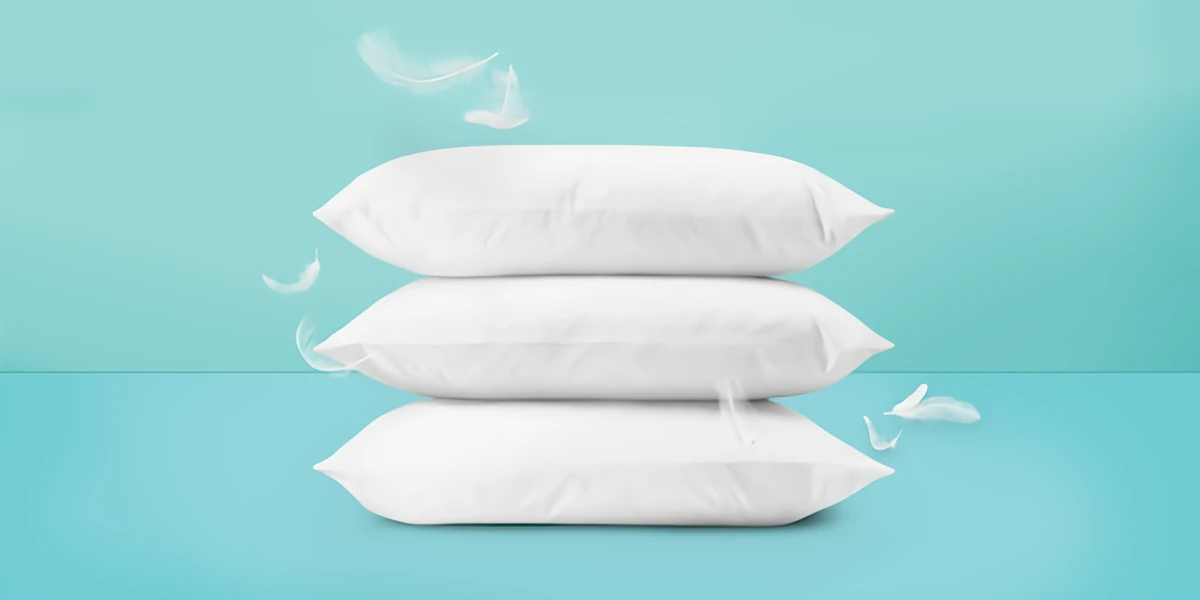
Drying: This is the most important step. Put the pillows in the dryer on a low-heat or no-heat setting. Throw in those dryer balls or tennis balls-in-socks. They’ll bounce around and break up any clumps, helping the feathers dry evenly. Plan for it to take a while, maybe 2-3 hours. Every 30 minutes or so, pull them out and give them a good fluff by hand. Don’t stop until they are 100% bone dry, inside and out.
Polyester & Microfiber (Synthetic) Pillows
These are the most common and affordable pillows out there. They’re easy to wash, but their biggest enemy is clumping. High heat will melt the plastic fibers together into permanent lumps you can never fix.
- Can you machine wash? Yep.
- What about the dryer? Yes, but ONLY on low heat.
- How long do they last? Usually 1 to 2 years. Honestly, for a cheap $10 pillow, sometimes it’s easier to just replace it than spend an hour washing and drying.
Washing: The process is pretty similar to down pillows. Two at a time to balance the load, gentle cycle, and a small amount of liquid detergent. For synthetics, you can use warm water, which is a bit better at breaking down body oils. An extra rinse is always a good idea.
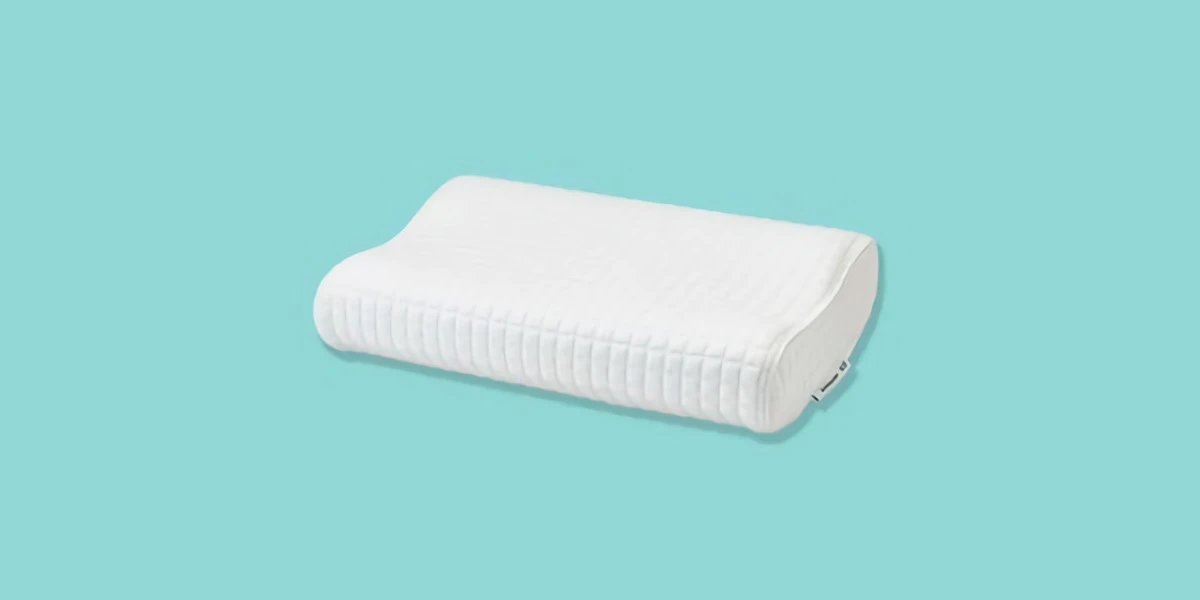
Drying: Low heat. I’m saying it again because it’s that important. I once had to explain to a hotel manager that their staff had ruined a hundred brand-new pillows by using the high-heat linen setting. The fill was hard as a rock. Use dryer balls, and pull the pillows out every 20 minutes to fluff them by hand and break up any clumps before they set.
Memory Foam & Latex Pillows
Heads up! These pillows should NEVER go in a washing machine or a dryer. Period. The washing machine will shred the foam, and the dryer’s heat will cause it to crumble and degrade. It’s also a serious fire risk.
- Can you machine wash? Absolutely not.
- What about the dryer? NO. Never.
- How long do they last? A good one can last 3 to 5 years.
Cleaning: This is a manual job. First, vacuum the pillow on all sides with an upholstery attachment to get rid of dust and hair. For spot cleaning, mix a tiny bit of mild soap into a bowl of lukewarm water. Dip a clean cloth in, wring it out until it’s just damp, and gently blot the stain. Don’t scrub! Then, use a second cloth dampened with plain water to “rinse” the spot by blotting it again.
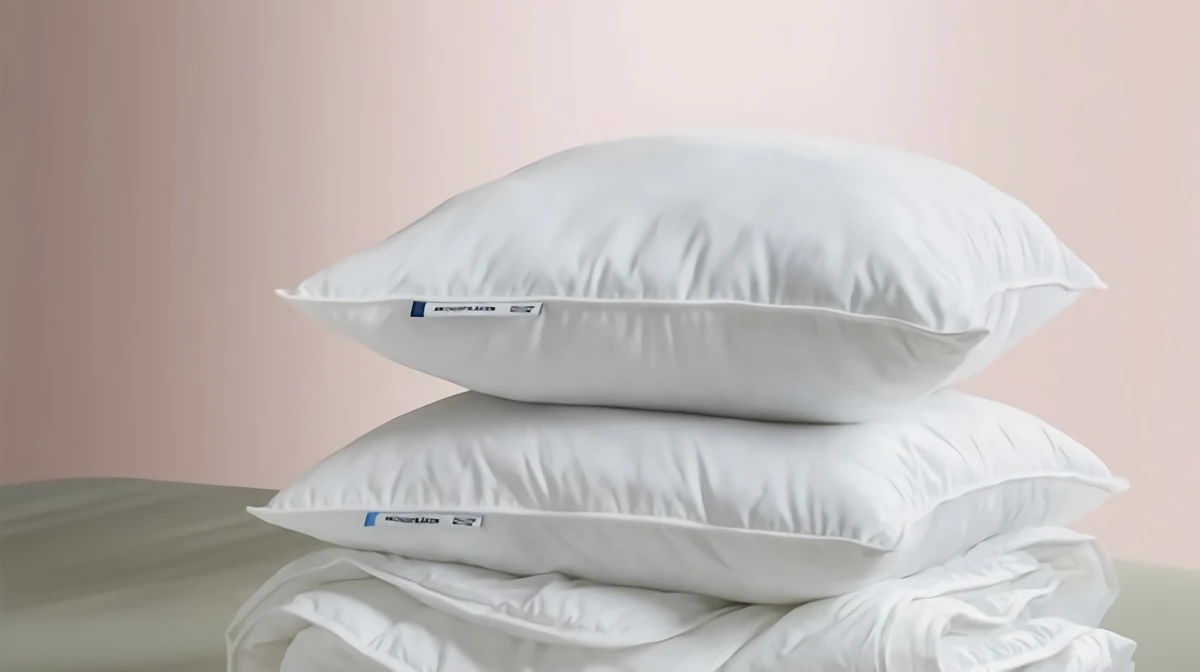
For an Emergency Deep Clean ONLY: If something disastrous happened (like a pet accident), you can try submerging the pillow. But be warned: this is a last resort, and it can take FOREVER to dry. Gently squeeze soapy water through the pillow in a sink, then repeat with clean water to rinse. Never twist or wring it out.
Drying: Gently press out as much water as you can, then roll the pillow in a thick towel to absorb more. Lay it flat on a drying rack in a well-ventilated room, away from direct sunlight. Flip it every few hours. Be prepared for it to take up to 48 hours to dry completely. Don’t even think about using it until it’s totally dry to the core.
Specialty Fills (Buckwheat, Wool, Kapok)
For these natural-fill pillows, you only ever wash the outer cover. Getting the fill wet will ruin it. For buckwheat pillows, unzip the cover and pour the hulls into a large box or onto a tarp. Lesser-known trick: Spread a large fitted sheet on the floor and pour the hulls onto it. When you’re done, you can just pick up the corners to create a funnel and pour them right back in! Let the hulls sit out in the sun for a few hours to air out and disinfect naturally. Meanwhile, wash and dry the empty cover. For wool and kapok, you do the same—just empty the fill, let it air out in the sun, and wash the cover.
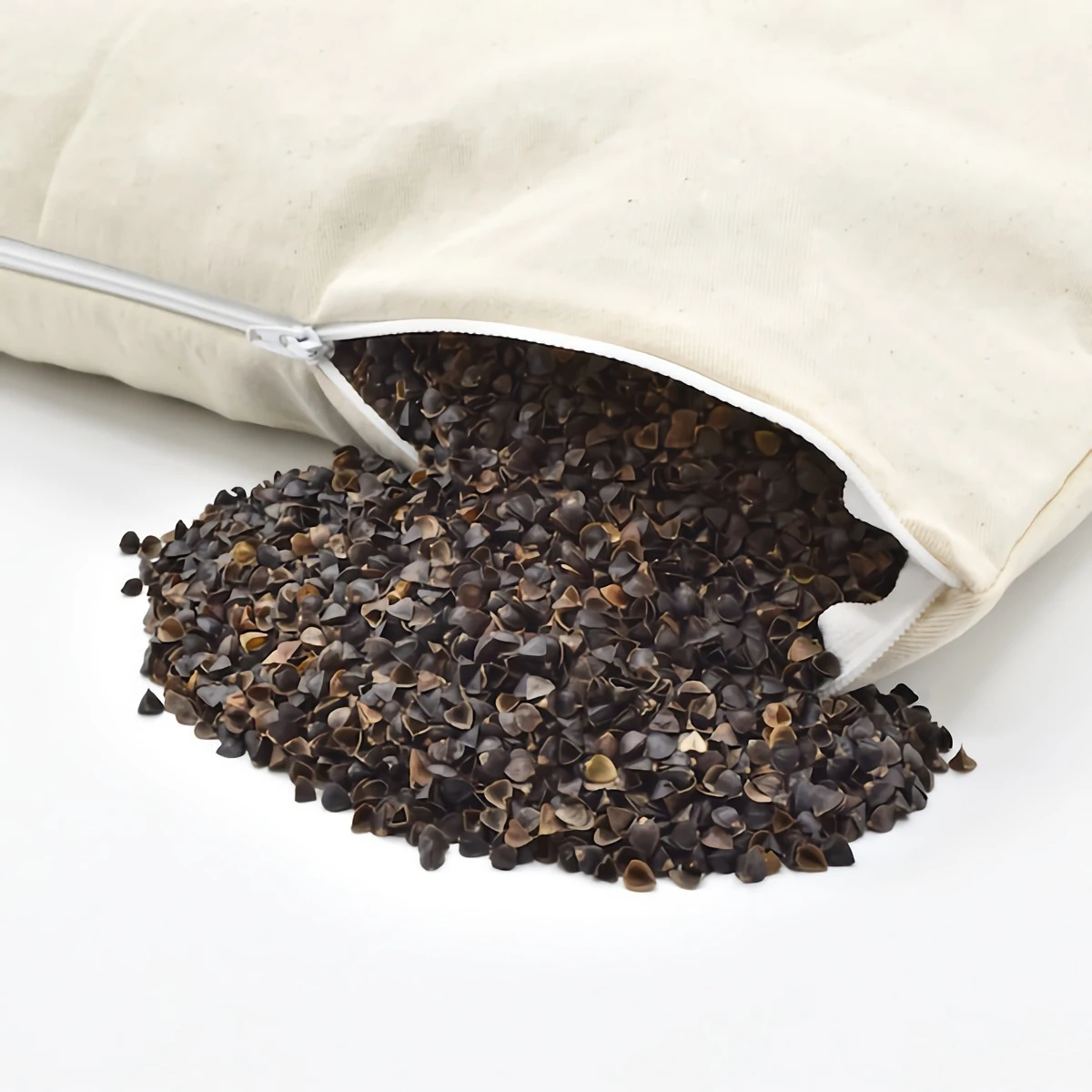
Oh yeah, and what about pillows with blended fills, like a down-and-polyester mix? Simple rule: always follow the cleaning instructions for the most delicate material in the blend. When in doubt, go with the gentle, cold-water method.
Keeping Your Pillows Fresh and Knowing When to Say Goodbye
Washing is great, but day-to-day care is what really counts.
Get a Pillow Protector. Seriously.
If you take one piece of advice from this entire article, let it be this: use a zippered pillow protector. It goes on your pillow, underneath your pillowcase. It’s a barrier that stops 99% of the gross stuff from ever reaching the pillow. A good one costs between $15 and $30 at places like Bed Bath & Beyond or online, and it can double the life of your $100 memory foam pillow. It’s the best investment you can make.
So, How Often Should You Wash Them?
If you’re using a protector, you can get away with washing the pillow itself every six months. But you might need to wash it more often if:
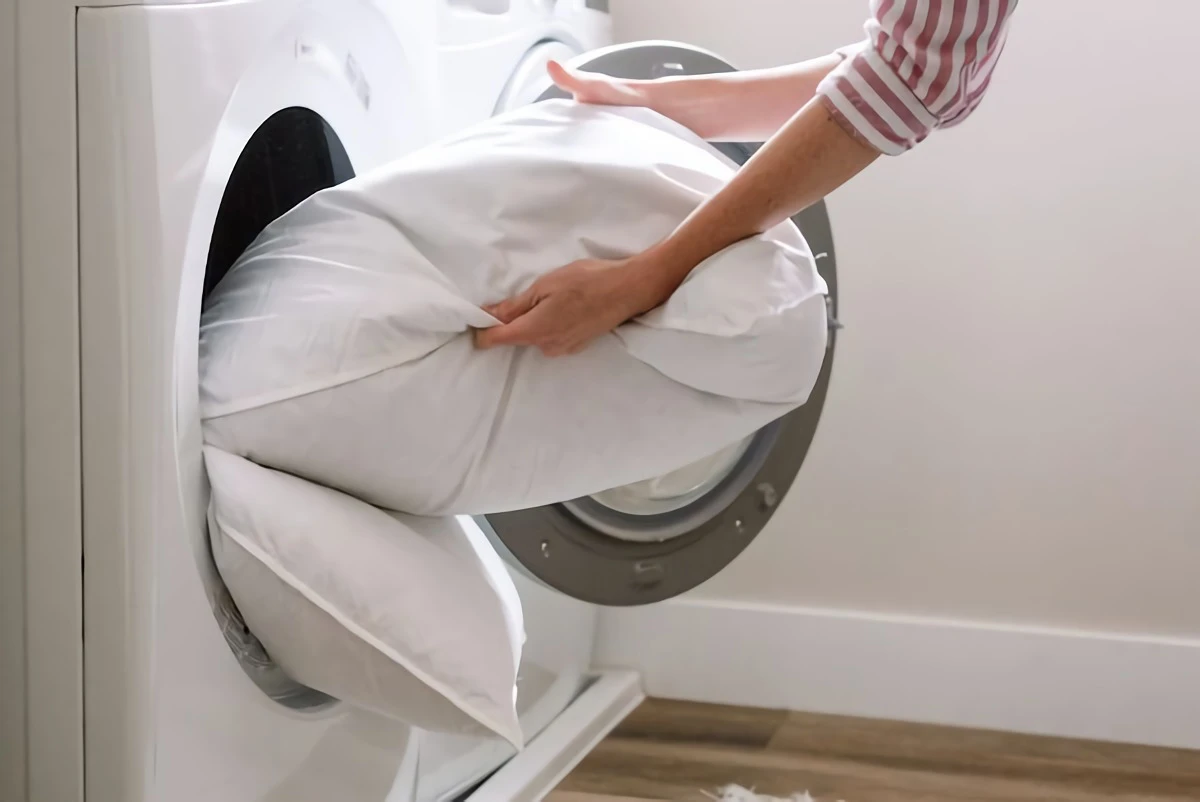
- You have allergies or asthma (every 3-4 months is better).
- You were sick (wash it as soon as you’re better!).
- You have pets who share your bed.
Knowing When to Call It Quits
Even a perfectly cared-for pillow won’t last forever. If your pillow is lumpy, has stains that won’t wash out, or still smells funky after a deep clean, it’s time. Most importantly, if you’re waking up with a sore neck, your pillow isn’t supporting you anymore.
And now, for your challenge: Go do the fold test on your pillow. Right now. I’ll wait. Come back and drop a comment to let me know—did it pass or fail? It’s the first step to a much cleaner, healthier night’s sleep.
Inspiration:
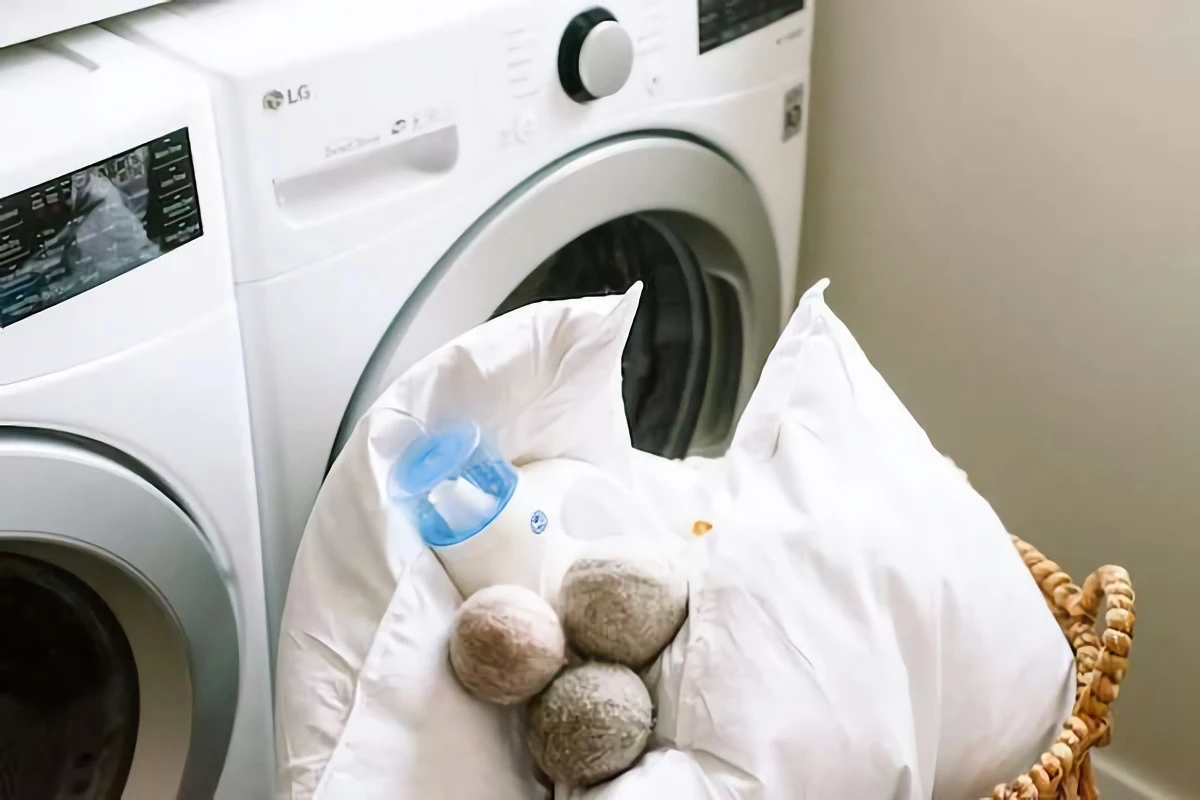
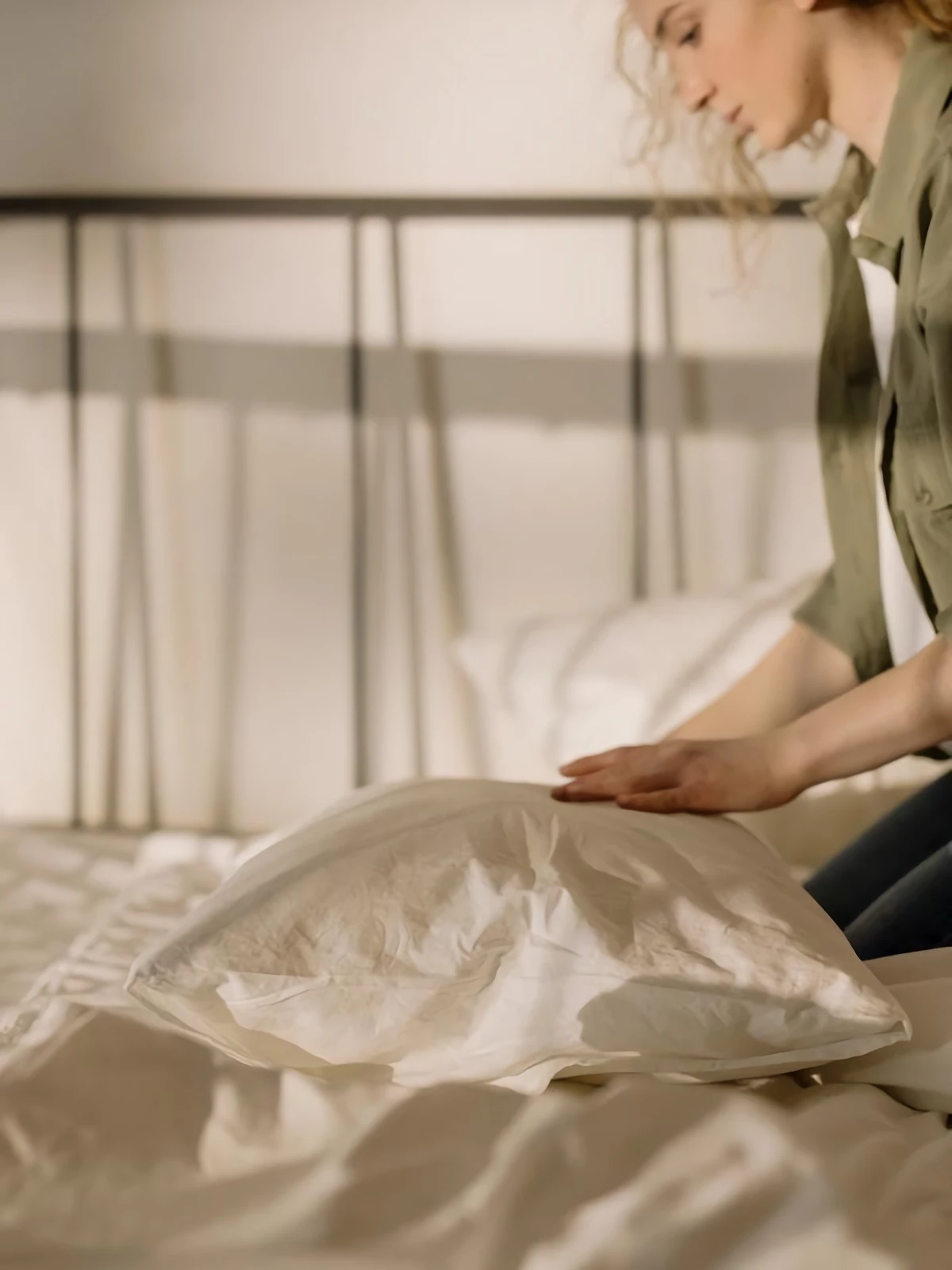
What about those pillows you can’t machine wash, like solid memory foam or latex?
Don’t submerge them! The dense foam can take days to dry and may never fully release the water, leading to mold. Instead, spot-clean any stains with a cloth dampened with a mild detergent solution. For a deep refresh, vacuum the pillow surface with an upholstery attachment, then lightly sprinkle it with baking soda. Let it sit for an hour to absorb odors before vacuuming it up again.

A study by the University of Manchester found that the typical pillow can contain up to 16 different species of fungus.
This isn’t just about the ‘ick’ factor; it’s about your respiratory health. Regular, proper washing—especially with a hot water cycle if the care tag allows—doesn’t just lift sweat stains, it actively sanitizes your sleep space, reducing exposure to allergens and fungal spores all night long.
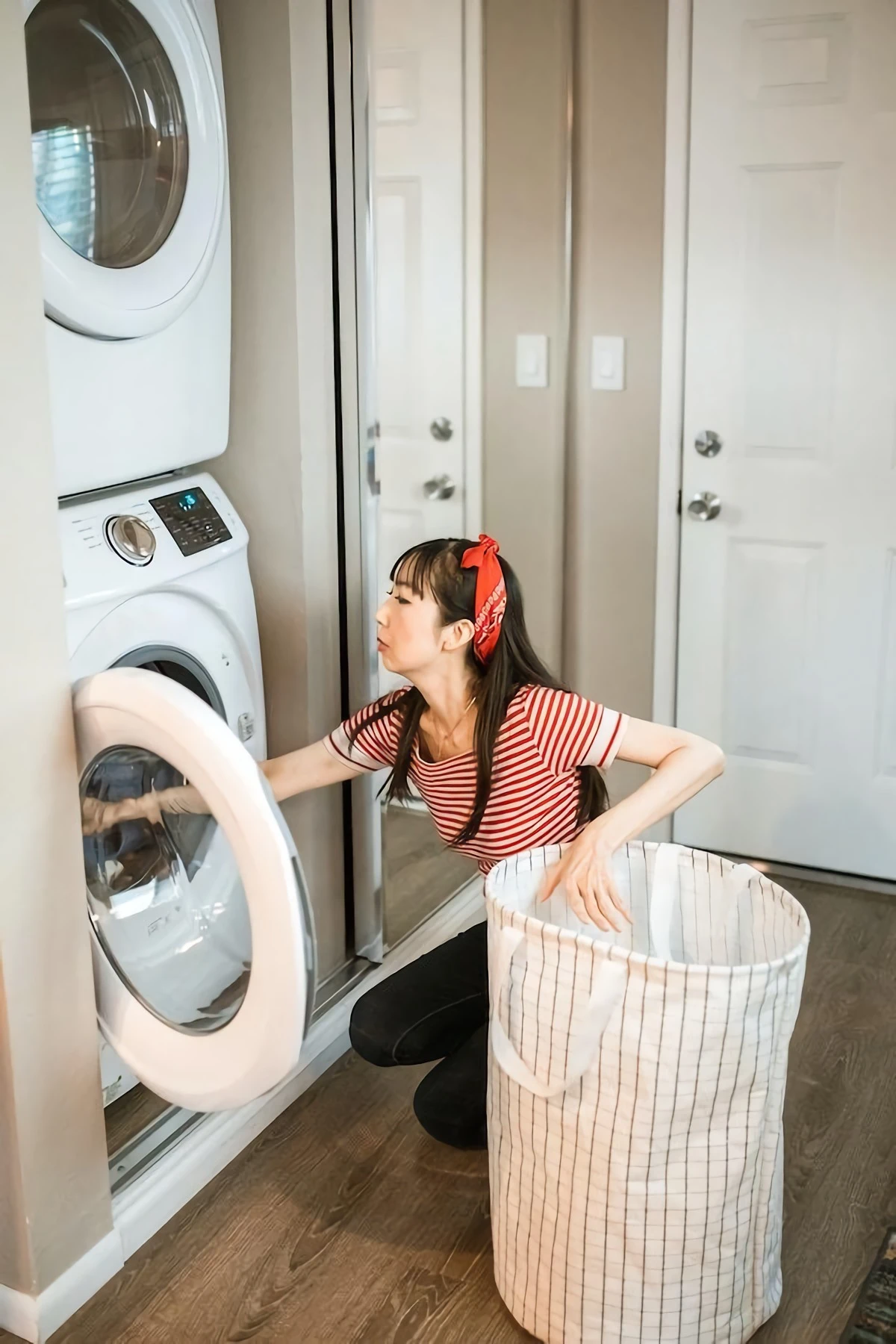
- Fluffs out clumps in down and fiberfill pillows.
- Speeds up drying time by up to 25%.
- Absorbs moisture, helping to prevent mildew.
The secret? Tossing two or three wool dryer balls, like those from Woolzies or Blueland, into the dryer with your pillows. They are a game-changer for achieving that perfectly even, lump-free dry.
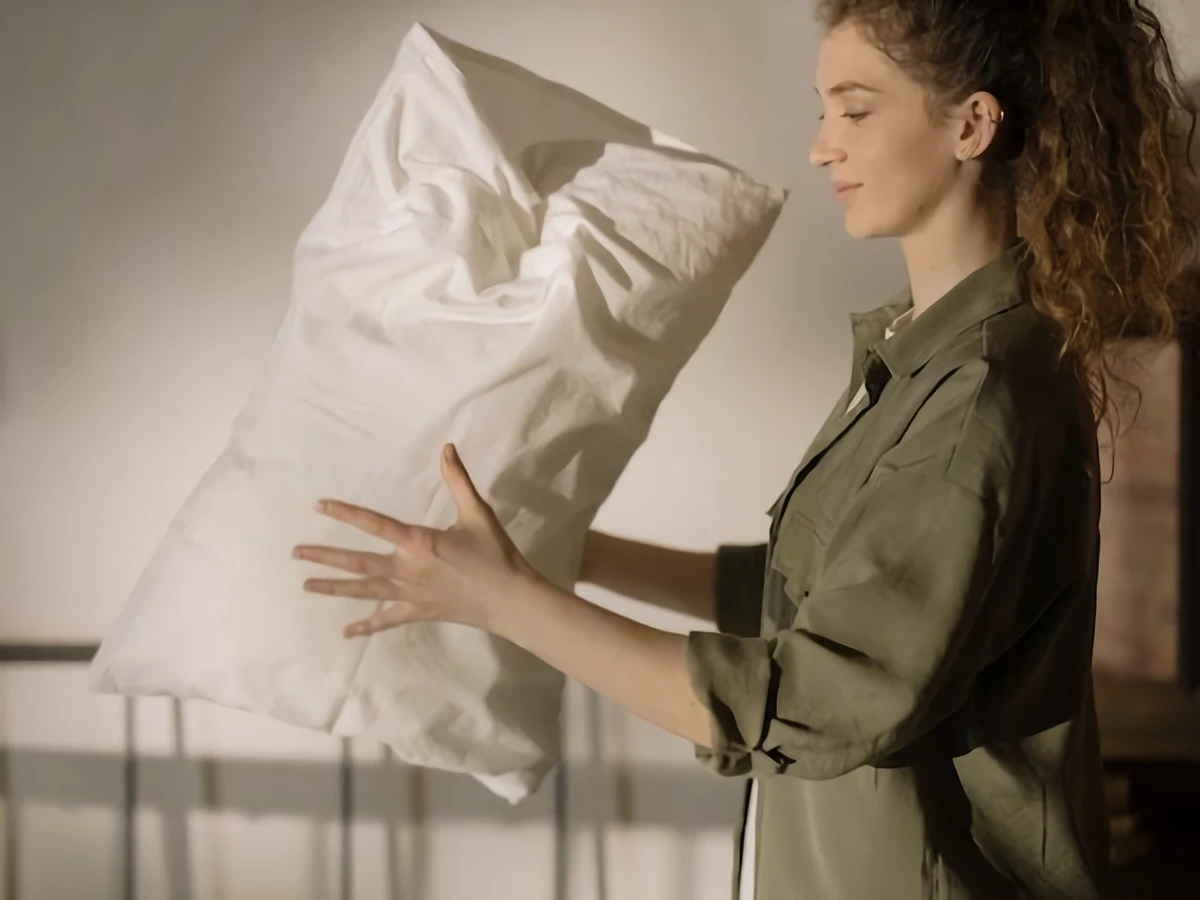
The Golden Rule of Balance: Never wash a single pillow alone. Always wash pillows in pairs to keep your washing machine’s drum balanced during the spin cycle. An unbalanced load can cause violent shaking that not only damages the pillow’s internal structure but can also strain your machine’s motor over time.
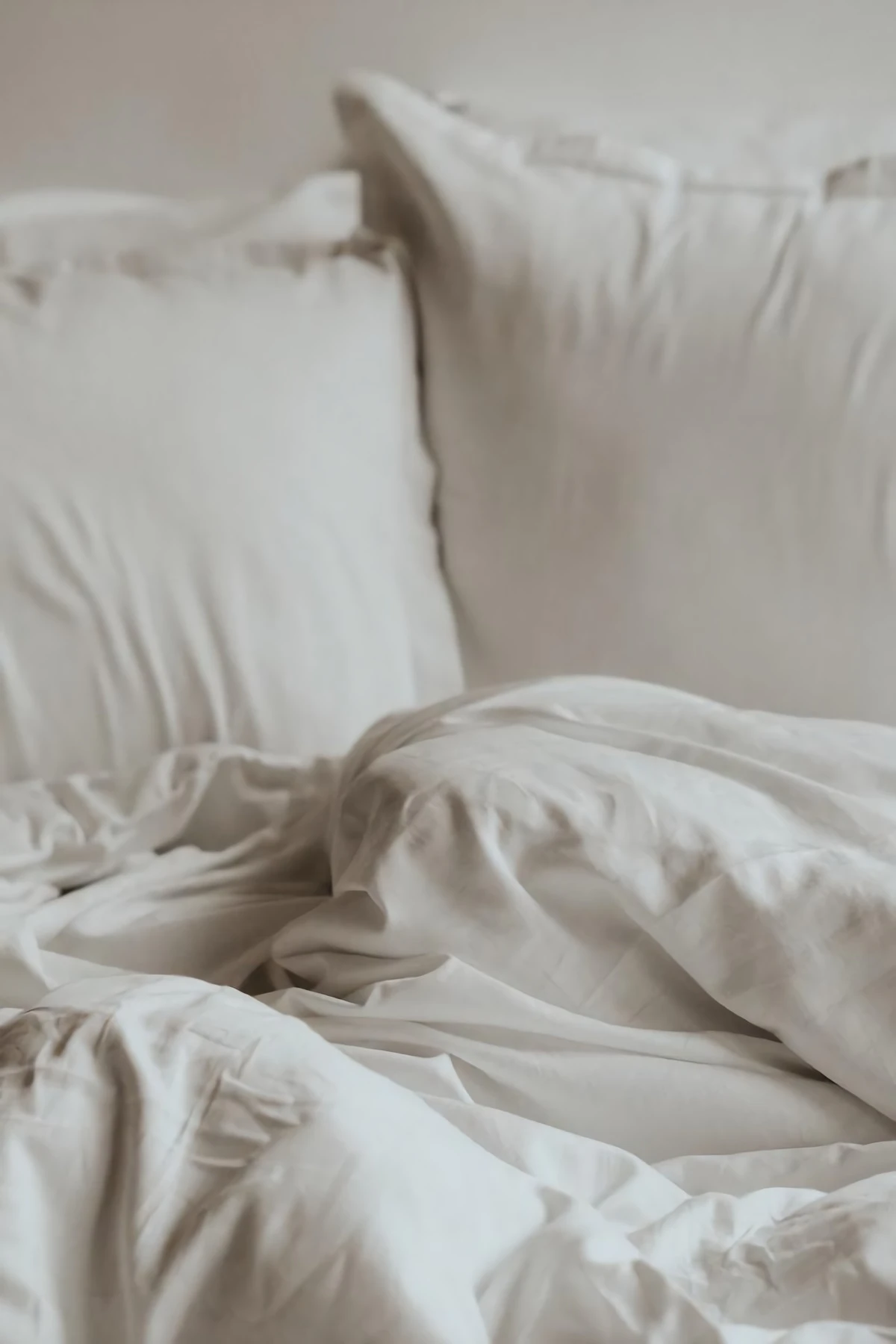
For a touch of calm and freshness between washes, a DIY linen spray works wonders. In a small spray bottle, simply combine:
- 1/2 cup distilled water
- 1 tablespoon of unscented witch hazel
- 5-10 drops of lavender or chamomile essential oil
Shake well before lightly misting your pillows in the morning. This allows them to air out completely and greet you with a subtle, relaxing scent at bedtime.
Mild Liquid Detergent: Your best bet. Use only a small amount of a low-suds, gentle formula, like The Laundress Delicate Wash or Tide Free & Gentle. It rinses out completely, preventing irritating residue that can weigh down delicate fill.
Fabric Softener: Skip it. It can coat down, feathers, and synthetic fibers, reducing their fluff and absorbency. For softness, a splash of white vinegar in the rinse cycle works better and helps eliminate detergent residue.










